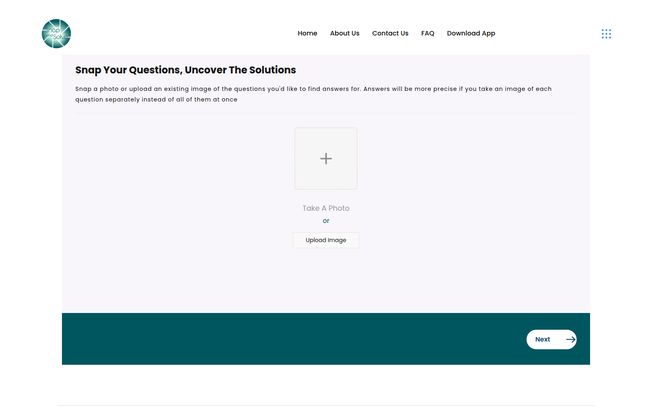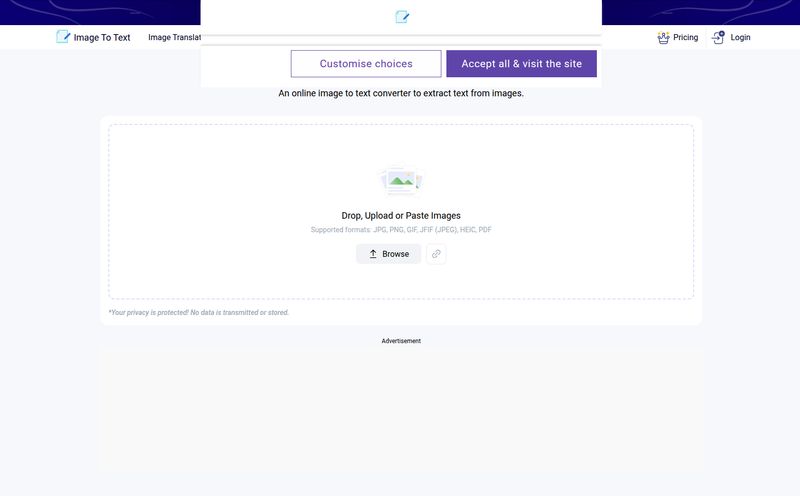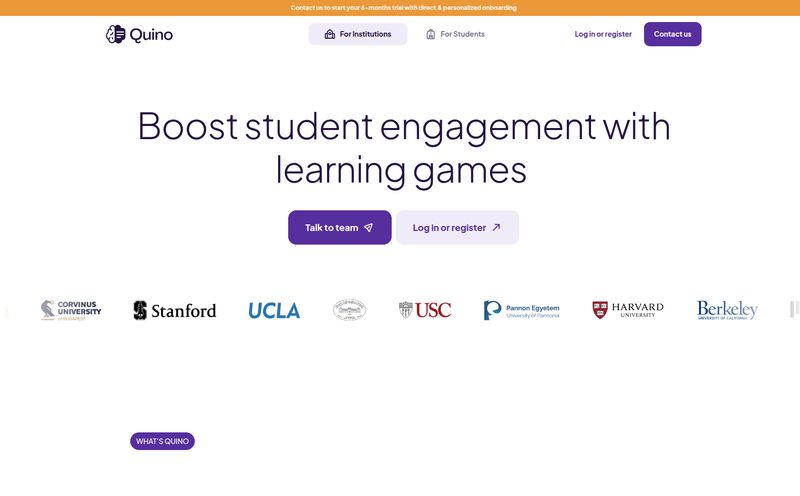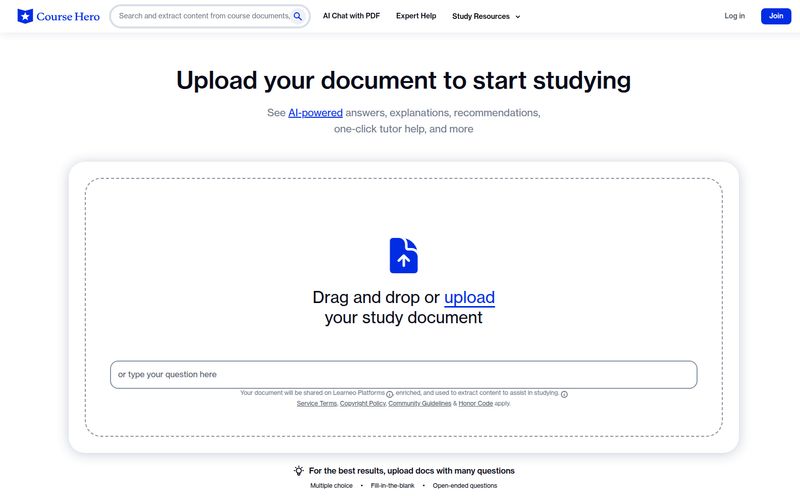I’ve been in the SEO and digital trends game long enough to see tools come and go. Some flash in the pan, brilliant for a moment, then fade away. Others stick around and fundamentally change how we do things. So when I stumbled across a new platform called SnapAndSolve, my curiosity was definitely piqued. The premise is so brilliantly simple it's almost audacious: Snap a photo of a question, get a solution.
We’ve all been there, right? Staring at a problem set at 1 AM, brain completely fried, wishing you could just beam the question to someone smarter. Or maybe you're prepping for a big job interview, running through practice questions, and you hit a total wall. SnapAndSolve claims to be the answer to those prayers. It’s a bold claim. Let’s see if it holds up.
What Exactly is SnapAndSolve?
At its core, SnapAndSolve is an AI-powered platform designed to be a visual question-and-answer engine. Think of it like a specialized version of Google Lens, but instead of identifying a plant or a piece of furniture, its sole purpose is to decipher and solve questions from an image. You either take a live photo or upload one from your device, and its backend—presumably some clever mix of OCR (Optical Character Recognition) and an AI model—gets to work.
The site markets itself as a helper for both homework and interview questions. This is a pretty smart positioning. It targets two groups who are often desperate for quick, accurate help: students drowning in assignments and professionals trying to land their next gig. It's not just for finding 'x', it’s for cracking that tricky logic puzzle that a hiring manager might throw at you.

Visit SnapAndSolve
My First Impressions and a Little Hiccup
Landing on the SnapAndSolve homepage, I was immediately struck by its simplicity. It's clean, minimalist, and gets straight to the point. No fluff, no annoying pop-ups. Just a big, inviting box that says "Take A Photo or Upload Image." I appreciate that. In a world cluttered with chaotic user interfaces, this felt like a breath of fresh air.
The instructions are right there: “Snap Your Questions, Uncover The Solutions.” It even offers a helpful tip upfront: take a picture of each question separately for better results. Good to know. But, my blogger-brain wanted more. I went looking for an 'About Us' page, a 'Pricing' section, or the 'Download App' link I saw in the navigation. And that's where I hit my first snag.
Click.
The page you were looking for doesn’t exist.
Huh. Okay. This tells me a few things. SnapAndSolve is likely very new, possibly in a beta or pre-launch phase. It’s a classic sign of a product that's still under construction. While a broken link isn't a great look, it also makes this review feel more authentic, doesn't it? We’re looking at this thing in its raw, early stages. It’s not some perfectly polished marketing machine. At least not yet.
How It's Supposed to Work
A Deceptively Simple Process
The user journey is as straightforward as it gets. You have a question on a piece of paper, a textbook, or a screen. You snap a clear picture. You upload it. You wait. And then, like magic, a solution appears. This process removes the friction of having to type out complex mathematical equations or long-winded word problems. It’s a tool built for the speed and convenience our phone-centric lives demand. It's the digital equivalent of tapping a classmate on the shoulder, but your classmate is a robot who never gets tired of your questions.
For Students and Job Seekers Alike
I find the dual-focus fascinating. For students, the application is obvious. From math and physics to history and literature, any question that can be captured in a photo is fair game. It could be an incredible study aid, helping you check your work or understand the steps you missed.
For job seekers, it’s a modern-day interview cheat sheet. Stuck on a coding problem from a prep book? Snap it. Unsure how to structure an answer to a common behavioral question? Snap it. It could be a powerful tool for preparation, giving you a second opinion on your approach before you face the hiring manager.
The Good, The Bad, and The Blurry
No tool is perfect, especially a new one. Based on the information available and my own experience in this space, here’s my breakdown of what looks promising and what gives me pause.
The Upside of Instant Answers
The main advantage is sheer convenience. The ability to bypass typing is a huge win. The interface is incredibly easy to use, making it accessible to pretty much anyone with a smartphone. It’s a time-saver, a potential frustration-reducer, and a very modern solution to a very old problem. In my book, anything that lowers the barrier to getting help is a good thing. We’ve all used search engines to find answers, this just refines that process for visual-based queries.
Potential Roadblocks to Consider
Now, for the reality check. The platform notes that answers can take up to 30 seconds to generate. In the age of instant gratification, 30 seconds can feel like an eternity. It’s not a deal-breaker, but it’s something to be aware of. More importantly, the accuracy is highly dependent on the clarity of the image. This is the classic "garbage in, garbage out" principle of computing. A blurry photo, bad lighting, or messy handwriting could easily trip up the AI. Finally, there's the advice to only capture one question at a time. This is a practical limitation. If you're trying to speedrun a 20-question worksheet, snapping 20 individual photos might feel a bit tedious.
What About the Price Tag?
This is the million-dollar question, isn't it? As of my review, there is absolutely no pricing information available. The pricing page link appears to be another one of those dead ends. Is SnapAndSolve free? Is it a freemium model where you get a few free snaps before hitting a paywall? Or will it be a subscription service? My guess is they're still figuring it out.
Many similar services, like Chegg or some features in Photomath, operate on a subscription basis. It would be a huge competitive advantage if SnapAndSolve managed to offer a robust free service, but that's a tough business model to sustain. For now, we'll have to put a pin in the cost conversation and wait and see.
Is This the Future of Learning or a Shortcut to Nowhere?
Let's address the elephant in the room. Is using a tool like SnapAndSolve… cheating? It’s a valid question, and one that educators have been debating since calculators became common. Some will argue that it prevents students from actually learning the material and developing critical thinking skills. And they have a point. If you simply snap a picture, copy the answer, and move on, you’ve learned absolutely nothing.
However, I've always felt that the tool itself isn't the problem; it's how you use it. A calculator can do the math for you, or it can help you check your work and experiment with numbers faster than you could by hand. Similarly, SnapAndSolve could be a crutch, or it could be a powerful learning aid. You could use it to get a solution when you're truly stuck, and then work backward to understand how the AI arrived at that answer. It can be a starting point for understanding, not an endpoint for mindless copying.
In my experience, the best learning happens when you have resources to fall back on when you stumble. Maybe this is just the 21st-century version of your dad helping you with your math homework.
Frequently Asked Questions
- What kind of questions can SnapAndSolve answer?
- It's designed for a wide range, primarily homework and interview-style questions. This could include everything from math equations and physics problems to logic puzzles and historical questions, as long as they can be clearly captured in an image.
- Is SnapAndSolve free to use?
- Currently, there is no pricing information available on their website. It might be free during an initial beta period, but its long-term pricing model is unknown.
- How long does it take to get an answer from SnapAndSolve?
- The platform suggests that answers may take up to 30 seconds to generate, depending on the complexity of the question.
- Can I use SnapAndSolve for my job interviews?
- It's positioned as a tool for interview preparation. Using it during a live interview would likely be against the rules and is definitely not recommended. But for practicing beforehand, it could be very useful.
- Why is it better to photograph one question at a time?
- Focusing on a single question improves the AI's accuracy. Too much text or multiple questions in one image can confuse the system, leading to incorrect or incomplete answers. It ensures the tool knows exactly what you're asking.
- Is SnapAndSolve available as a mobile app?
- The website has a "Download App" link in its navigation, but it currently leads to a non-existent page. This strongly suggests an app is planned or in development, but it does not appear to be publicly available yet.
My Final Verdict on SnapAndSolve
So, what's the bottom line? SnapAndSolve is an intriguing tool with a ton of potential. The concept is fantastic, and the user interface is clean and focused. It taps directly into a real need for quick, accessible help for students and job seekers.
However, it also feels very much like a work in progress. The broken links, lack of a clear pricing structure, and performance caveats (wait time, image quality) are all signs of a product in its infancy. It's a promising blueprint, but the house isn't quite built yet. I'm genuinely excited to see where it goes from here. If the team can iron out the kinks, build out their features, and maybe even launch that app, SnapAndSolve could become a seriously handy tool in a lot of people's digital toolkits. I’ll be keeping an eye on this one. For now, it's a cool concept worth bookmarking for the future.
Reference and Sources
- For comparison on visual search: Google Lens
- For an established tool in the homework help space: Photomath
- On the topic of AI in education: EdSurge article on AI in the classroom



